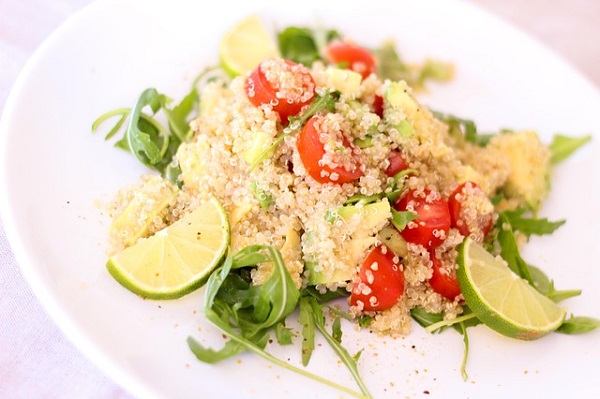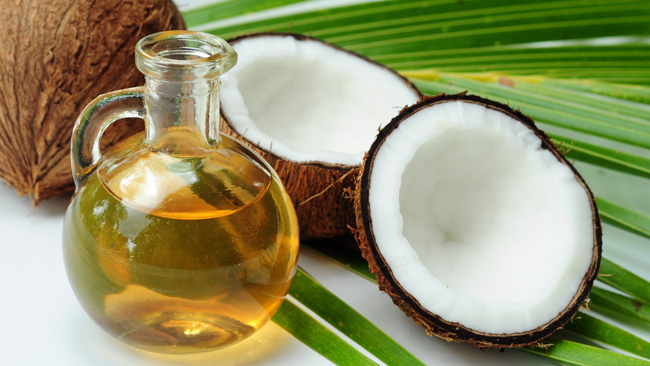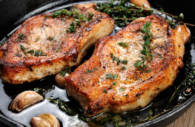
New Year, New You: 10 mistakes to AVOID in your fitness journey
How many of us are planning on turning over a new leaf with our health and fitness regime for 2017?
Before you dive into your new routine, you need to make sure you’re taking the right approach. Here to help is health and fitness expert Damian Hall (Complete Personal Training), who is providing expert advice and busting common mistakes and misconceptions.
Mistake 1: Basing your meals around carbs
A common mistake people make with their diet is basing their meals around carbohydrates. Whether it’s spaghetti, pizza, a casserole or even a sandwich/ wrap you are having for lunch or dinner, you’re likely to be slowing your metabolism.
Carbs can slow down the metabolic process, causing weight plateaus and even weight gain. Basing your meals around protein, and balancing them with a small portion of ‘good’ carbs and fats, will help kick-start your metabolism.
- Try basing meals around lean proteins like lean cuts of beef, fish, chicken, pork loin or turkey.
- For vegetarians, some high-protein choices include legume products (provided you soak them), chia seeds, Ricotta cheese and quinoa.
- Plan meals and snacks throughout the day to keep hunger from creeping up. This is a great way to prevent over-eating and keep the metabolism steadily working.
- Don’t cut out carbs completely; make better choices. Oats, basmati rice and buck wheat are complex carbs that also take longer to digest than refined, white carbs.
- Adding lots of protein as well as healthy carb choices to your diet can lead to a healthier metabolism. It can also help keep you feeling fuller longer, and cut carb cravings.
Mistake 2: Eating 5-6 mini meals per day
It is a challenge to have time for breakfast, much less finding the time to consume six meals per day. A better solution is to plan for meals and eat when it is convenient for you. Eat when you are hungry, and make better choices.
Your plate at each meal should have one protein, one quality carbohydrate or healthy fat, and vegetables. Choosing natural foods is always best. In order to have healthy choices, shop for healthy foods. Start on the outer edge of your grocery store and choose produce, deli foods, meat and dairy, first.
Snacks are an important part of your diet, too. They help control hunger and cravings. Nuts, berries, cheese, Greek yogurt and seeds are all choices that can go in a plastic bag or lunch box for on-the-go people. Plan out a few snacks for the day. Even if you are staying at home, pre-planned, portion controlled, snack bags are a great way to ensure you won’t over-eat or go for other unhealthy snacks.
Portion control is the key to any diet, whether you are eating three larger meals or six smaller meals. Find a routine that fits your schedule, and plan accordingly.
Mistake 3: Taking diet pills
For years, people have searched for a shortcut to weight loss. Diet pills have continued to fly off the shelves, though it has been proven they do very little to help with weight loss, and even less to maintain long-term weight loss. Diet pills are ineffective, and some are downright dangerous.
Diet pills, prescribed or over-the-counter, do one of two things. One type helps suppress appetite. The other is a fat-blocker that alters the absorption of fat in food. Diet pills that suppress the appetite usually contain Hoodia, fenfluramine (Phen-Fen) and dexfenfluramine or a combination of the drugs. They can cause high blood pressure, increased heart rate, headaches and sometimes even behavioural changes.
The bottom line is: that there is no magic pill for weight loss. Even on a diet pill, dieters must control eating habits and exercise for them to be effective. Many would argue that the very small benefits are not worth the risk to their health. Diet pills also have a reputation for only working in the short term. For long-term weight loss, a permanent lifestyle change is the only way to go.

Mistake 4: Exercising at a low intensity (in the ‘fat-burning’ zone)
High-intensity cardio has been shown to burn more calories overall than slow, steady cardio. For example, 30 minutes of low-intensity exercise will burn approximately 200 calories, while high-intensity training for 30 minutes can burn approximately twice that with the same amount of calories coming from fat.
One form of training that has proven to work the best in the shortest amount of time is high-intensity interval training (HIIT). HIIT involves short burst sprints on foot, swimming, biking or other exercises, alternating with short periods of rest; for example, 10 one-minute sprints alternating with one minute of walking.
Try this workout:
| 20x | Squats |
| 20x | Press-ups |
| 20x | Lunges (each leg) |
| 20x | Second plank |
| 20x | Hip lifts |
| 20x | Side planks (each side) |
Repeat three times with no rest between exercises. Take one minute’s rest in between each set. Before you begin, make sure you have permission from your doctor.
Mistake 5: Avoiding strength training
Cardiovascular training is a great way to lose weight and get in shape, but you rarely hear much about strength training. Strength training is one of the best ways to increase your metabolism by building muscle.
There are some easy ways to add a strength-training program to your current exercise routine. A beginner should start with three times a week, with recovery days in between. Weight machines in the gym are one way to become familiar with different muscle groups and exercises for those muscles. They also help to stabilise the body to decrease risk of injury.
There are several health benefits to strength training. Joint flexibility is improved, helping to prevent pain and limited mobility with the progression of age. It helps prevent diabetes, because muscle pulls glucose from the blood, helping to stabilise blood sugar. Weight-lifting gets rid of visceral fat that can build up around the abdominal area as well as the organs.

Mistake 6: Not drinking enough water
Fizzy drinks, coffee, tea and other beverages are the preferred choice for many. These drinks have added sugar and caffeine, and can cause a loss of water. Mild dehydration causes the metabolism to slow down as well as a myriad of other problems.
Water is lost through urination and sweating all day long. We need a minimum of two litres of water per day, and more when exercising or in hot weather. Water aids digestion, helping the kidneys to do their job by flushing out waste. This gives the liver a chance to flush out fat instead of working overtime for the kidneys.
Drinking enough water each day is an easy way to stay healthy inside and out. Research suggests that something as simple as water helps with weight loss and a speedy metabolism. Implementing water in your diet should be the first and easiest thing you can do to begin a new start with a healthier lifestyle.
Mistake 7: Not making time for rest and recovery
Overtraining is one of the best ways to become burned out or injured. It can also cause the metabolism to begin slowing down and your weight to plateau.
If you are a beginner, try three to four days a week, to start. Strength training should be every other day, taking more time to rest if there is extreme soreness. Vary your workouts to use different muscle groups and make it more fun. Take classes one day, and use the weight room the next day.
Burn-out tends to occur when one starts out hard and fast in the gym. About 50 percent of new gym members quit going on a regular basis after the first six months. A lot of this can be related to boredom, aches and pains and fatigue, which is more likely to occur if rest days are not fit in to your schedule.

Mistake 8: Failing to eat enough fats
It’s hard to tell what is healthy and what’s not, with all the information out there today. Common, processed, diet foods are often labelled with fat-free, low-fat, no trans-fat or low in saturated fats. Processed foods may make you fat, but fat is not the enemy. Your diet should include 25 to 35 percent fat, daily. Fat-soluble vitamins like A, D, E and K need fat for absorption.
Types of fats to incorporate daily:
Coconut oil: A medium-chain triglyceride (MCT), this type of fat is easily digested and immediately burned for energy, while giving the metabolism a boost. This is a great choice for stir fries and other healthy alternatives to frying.
Red palm oil: About 50 percent saturated, red palm oil has been hailed for its benefits – among them its antioxidant and vitamin E content. Research has proven it helps heart health, lowers cholesterol and even premature aging.
Olive oil, safflower oil, peanut oil, corn oil: These improve blood cholesterol, decrease heart disease risk, control blood sugar levels and help reduce the risk of type-2 diabetes.
Omega-3 fatty acids: These are healthy fats that have been shown to help lower triglycerides and prevent Alzheimer’s. They are found in cold water, fatty fish like tuna and salmon, as well as walnuts, flaxseed, kidney beans, black beans and grass-fed beef.
Mistake 9: Relying on metabolism-boosting foods
The new trend is figuring out how to enhance your metabolism using so-called metabolism-boosting foods. They seem like the easy answer to weight loss, and yet using these foods without the benefit of diet and exercise is a recipe for disaster. Metabolism-boosting foods make a minimal change in metabolism, but used alone, they may actually make you gain weight.
A metabolism-boosting food can be a beverage, a tasty treat, a spice or a negative-calorie food. Caffeinated drinks like black coffee, black tea and green tea have been hyped as metabolism enhancers along with protein shakes and dark chocolate.
Metabolism-boosting foods make dieting sound like a breeze. Most people consume all of these things on a regular basis – there is a downside. These items are called boosters for a reason: they are meant to boost your weight loss efforts. However, no amount of dark chocolate and chili peppers in the world will affect your metabolism enough to counteract eating junk food and a high-calorie diet. The pace of your metabolism will only truly pick up once you are eating healthy, natural foods and exercising at least three times a week.

Mistake 10: Consuming diet foods and drinks
Weight loss requires a calorie deficit. In order to lose one pound a week, you must cut about 500 calories a day from your diet. The diet industry knows this, and in response, they have created millions of products claiming to be low fat, no fat and low calorie. If you are basing your diet around processed, diet foods and drinks, your diet and metabolism is suffering.
Eating natural, healthy foods is the best way to lose weight. Even natural foods like dairy products labelled non-fat or low fat are not necessarily the best choice. Skim milk is thought of as a better choice than milk with fat for a healthy diet. While milk does contain saturated fat, in moderation, it is not bad for you.
If you want to eat healthy, shop in your supermarket produce, meat, deli and dairy aisles. Learn to shop for ingredients that can be staples in your cupboards. Keep trans-fats to a minimum, but worry less about the non-fat label and more about the product’s list of ingredients. Try adding healthy fats and fibre to your diet with natural snacks like nuts, nut butter with veg sticks, and sunflower seeds

Good luck, ladies!










